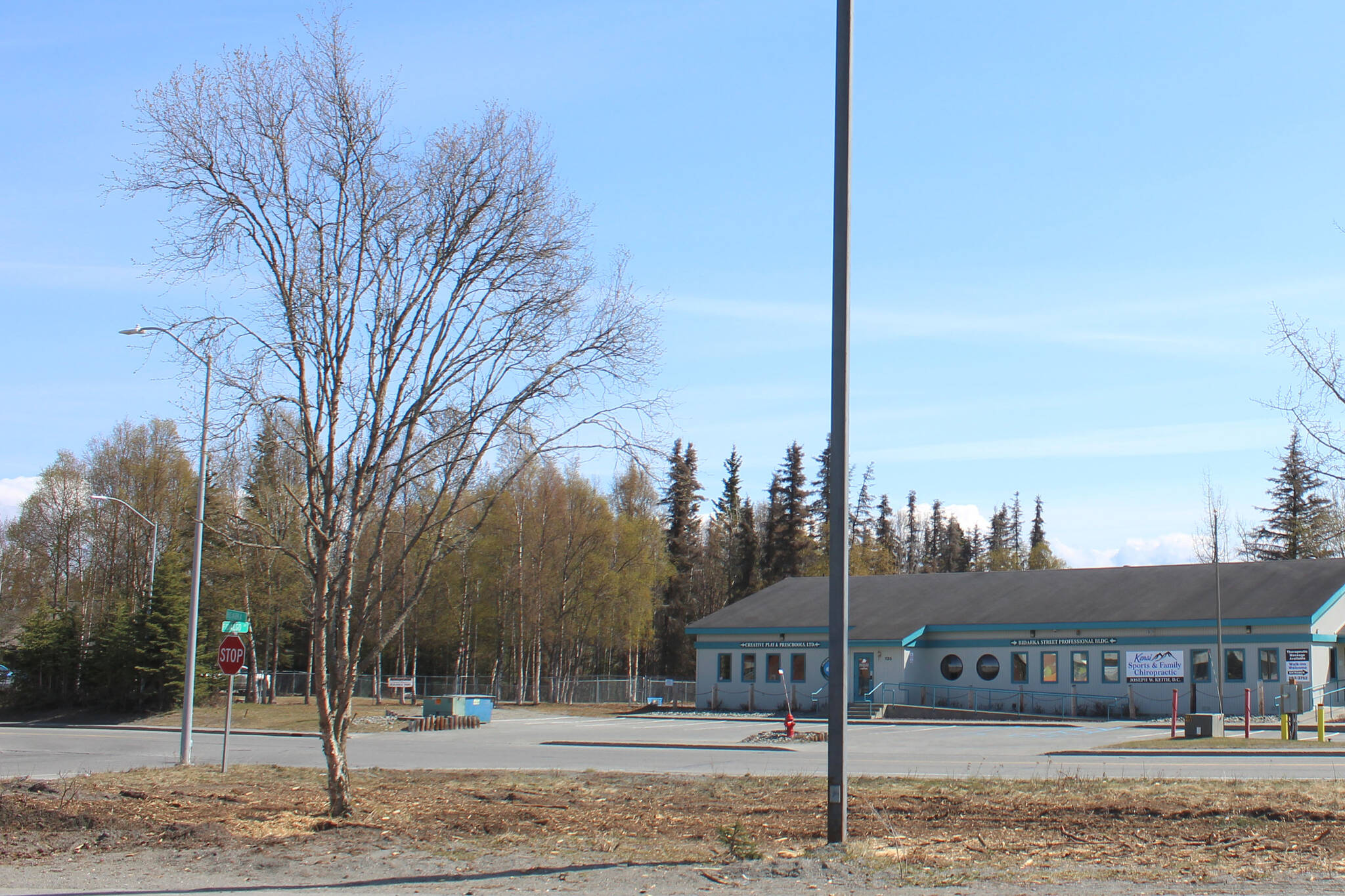If it looks like the City of Kenai has gotten a little bare lately, that’s because it has. The city is removing trees infested with spruce bark beetles, many of which are dead and vulnerable to fires.
The city is planning to open on June 1, or as close to June 1 as possible, a slash disposal site in the city north of the soccer fields where people locally will be able to dispose of slash. The site will be funded with grant money, Kenai City Manager Paul Ostrander said, and is meant to provide a location that is more convenient for locals than the Central Peninsula Landfill.
In all, Ostrander said the city hopes to leverage three grants to accomplish spruce bark beetle mitigation work. Two of those grants would come from the Alaska Division of Forestry specifically for treatment of dead and dying trees and for the slash disposal site, which would be open and maintained by the city four days per week throughout the summer.
Ostrander said mitigation activities will continue through the rest of the summer, both by the city and by private residents working to fell trees on their own properties. He said it’s important to remember that beetles are most active in the summer and that people taking down trees should be mindful to keep beetle infested trees away from non-infested trees.
While the current beetle outbreak rages, Ostrander said it’s not completely new territory: The borough experienced a spruce bark beetle outbreak in the 1990s that required a lot of attention. Still, he said the City of Kenai hasn’t previously concentrated this level of effort into mitigation efforts.
“This spruce bark beetle outbreak seems more severe than anything I can recall,” Ostrander said.
The City of Kenai plans to work with the Alaska Division of Forestry, Ostrander said, to itemize the total number of hazard trees that need to come down. There are some areas where reforestation efforts will be “necessary” he added, but said the city doesn’t have formal plans yet that describe what revegetation will look like.
“Revegetation needs to be a part of this,” Ostrander said.
Work in the City of Kenai comes as others on the central peninsula work to mitigate risk from beetle-killed trees. The City of Soldotna worked expeditiously last month to secure permission from city council members to begin taking down hazard trees at city campgrounds, which the city said were of risk of falling.
The Kenai Peninsula Borough’s Land Management Division is currently crafting a timber sale and reforestation program that would address the issue on borough land. The proposed program is two-pronged: Phase One includes the removal of infected trees from borough land, while Phase Two will focus on reforestation efforts.
As of 2020, more than 150,000 acres of forest had been impacted by spruce bark beetle infection on the Kenai Peninsula, including about 21,000 acres of forested land between Cooper Landing, Kenai and Soldotna.
Spruce bark beetles kill trees by boring through bark and feeding in a tree’s phloem, according to the National Park Service. Phloem is the innermost layer of the bark and transports compounds produced through photosynthesis to other parts of the tree. By disrupting that process, beetles are able to starve the tree and cause it to die. That death is accelerated by a fungus brought by the beetles that prevents the movement of water through the tree.
A common indicator of beetle presence is boring dust, similar to sawdust, which collects at the base of the infected tree and in bark crevices. The dust is pushed out of holes in the bark where beetles enter and clear tunnels under the bark. Pitch tubes, or red globs on the surface of the tree bark, are seen where the tree has tried to push the beetles out.
Residents can further take an active role in reducing spruce bark beetle populations by knowing how to treat and store their spruce firewood. The Alaska Division of Forestry offers guidance on their website about the best conditions for wood at each stage of infection.
Reach reporter Ashlyn O’Hara at ashlyn.ohara@peninsulaclarion.com.


